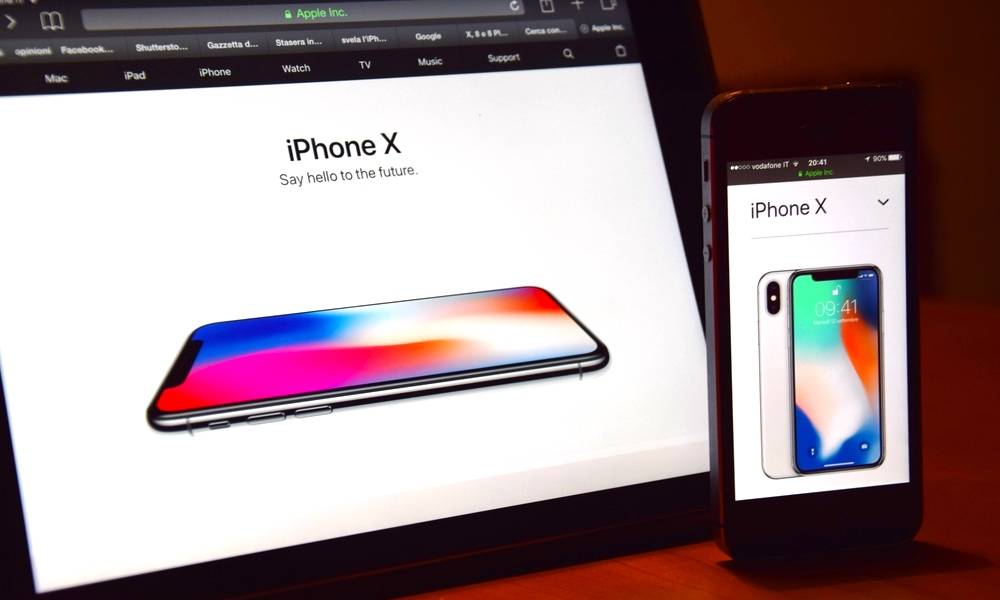Legally Blind Woman Sues Apple for Alleged Acts of Discrimination
 Credit: matteo_it / Shutterstock
Credit: matteo_it / Shutterstock
Toggle Dark Mode
Over the weekend, Apple was slapped with a damning new lawsuit that accuses its online website and storefront of being designed (knowingly or not) in violation of the American’s with Disabilities Act (ADA) of 1990. Specifically on grounds that the content isn’t coded to work in compliance with and be fully accessible to blind or visually-impaired persons using software-based accessibility aids.
Filed on Sunday by Ms. Himelda Mendez with the U.S. District Court for the Southern District of New York, the complaint essentially accuses Apple of denying “full and equal access” to its website for blind and visually-impaired consumers like herself.
Mendez, who’s described in court documents as a “visually impaired and legally blind person” who relies on screen-reading software to access the internet, is the sole plaintiff — though she allegedly filed the complaint on behalf of herself, and “all other users” with similar accessibility limitations and experiences.
To access the Internet at home, Mendez relies on a sophisticated software program that’s able to read-out-loud information displayed on the screen — and/or output said information to a standalone Braille display. In most cases, however, the software relies on a website being designed and coded in a specific way to allow its proper interpretation.
The Chief Complaint
In filings that were published online Monday, Mendez, who’s said to be proficient using the Jobs Access With Speech (JAWS) screen-reading program, claims she visited Apple’s website earlier this month only to encounter “multiple access barriers” that ultimately denied her “full and equal access to the facilities, goods, and services offered to the public.”
In her case, Mendez claims she was unable to do basic things like browse and purchase products, or learn more about the features available to her in New York-based Apple Stores, simply because, she asserts, apple.com is not designed in compliance with the World Wide Web Consortium’s most up-to-date Web Content Accessibility Guidelines.
Mendez’ complaint outlines a list of grievances with how Apple’s website is designed — but, more specifically, appears to detail what needs to be done in order for it to comply with ADA standards.
For example, the complaint points to the inherent lack of “alternative text for graphics, empty links containing no text, redundant links, and linked images missing alternative text.”
If the site was fully accessible, Mendez believes those using screen-reading software like herself would be able to navigate it and perform the same transactions as those with sight.
An All-Inclusive Solution
Not only does Mendez assert that these issues collectively resulted in her denial of “full and equal access” to Apple’s website, but that the company’s alleged lack of compliance with the latest WCAG 2.0 guidelines implies it has “engaged in acts of intentional discrimination,” based on the premonition that apple.com was not designed with blind and visually-impaired consumers in mind.
Ultimately, Mendez is seeking a permanent injunction requiring Apple to hire and retain a qualified web consultant with knowledge of WCAG 2.0 guidelines, to train said consultant on the latest accessibility compliance, periodically verify apple.com FOR compliance (to include regular testing by blind and visually-impaired users), and ultimately, for Apple to adopt and publish a new accessibility policy for all consumers to access on all its domestic and international websites.
Mendez is also seeking “compensatory damages” in an amount to be determined, including all applicable punitive damages, fines, and legal fees incurred by her.
Apple and Accessibility
While Apple has yet to comment on this case, it’s worth pointing out that the company is actually one of the most Accessibility-friendly in business today.
Not only are Apple’s products and operating systems equipped with a suite of advanced accessibility features for the blind, visually-impaired, deaf, hard-of-hearing and a host of other physical and motor disabilities, but the company has actively engaged in advocacy for people with disabilities, hired employees who struggle with those disabilities, and has overall made a name for itself as perhaps the most all-inclusive corporation in the world.
It’ll certainly be interesting, from that vantage point, to see how Apple responds to this litigation.






